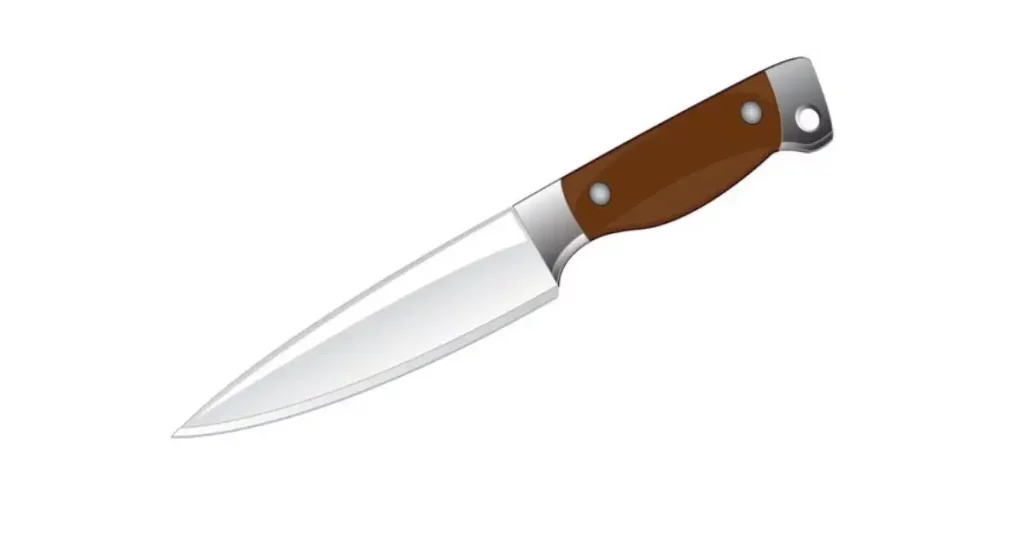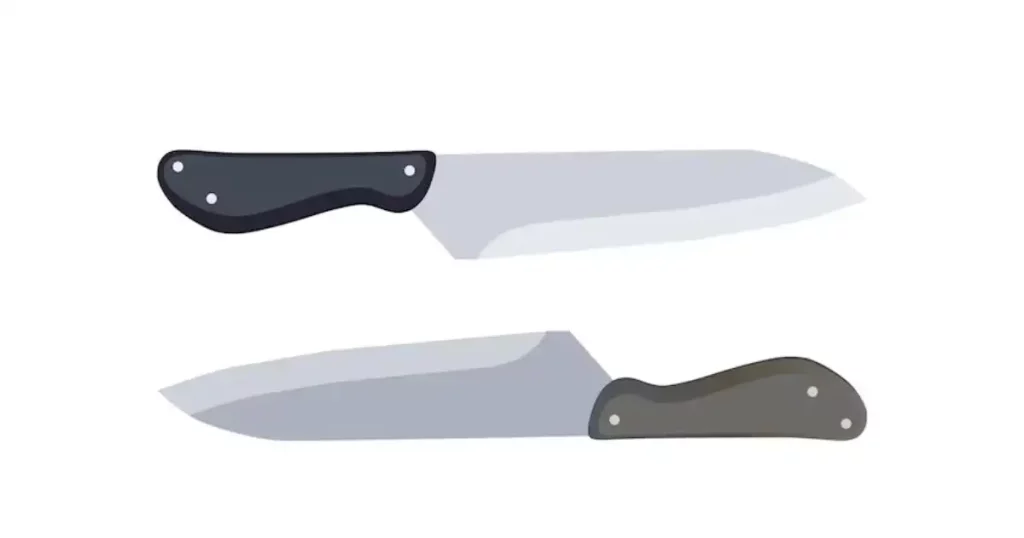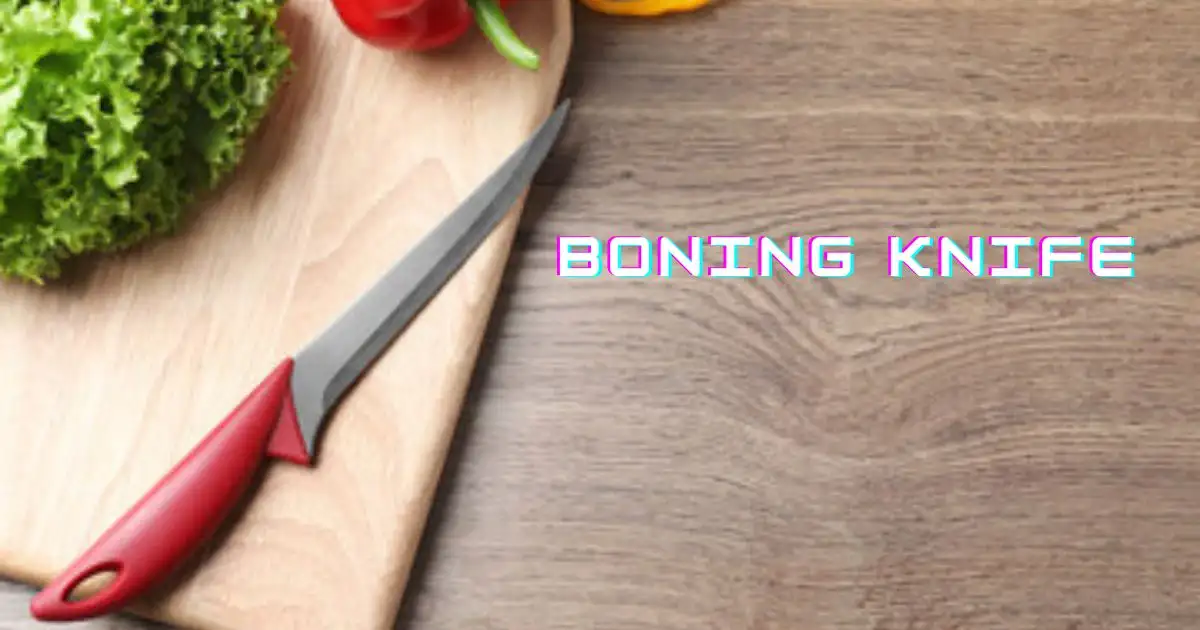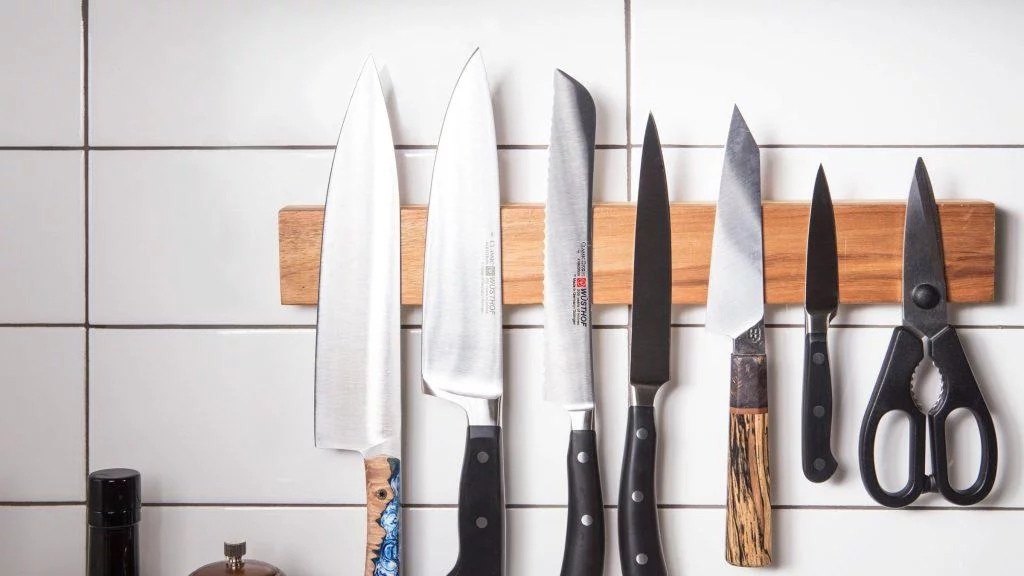Precision in Every Cut: The Best Boning Knives for Kitchen Mastery
Table of Contents
ToggleIntroduction
A boning knife is an indispensable necessity or just another kitchen gadget vying for space in our drawers. In this exploration, we delve into the anatomy of a boning knife, understanding its design nuances and the purposes it serves. Is it a specialized tool reserved only for professionals, or can home cooks navigate the culinary landscape without it? As we traverse the realm of kitchen cutlery, we’ll weigh the advantages of a boning knife, consider viable alternatives, and discern situations where this tool might not be a crucial addition.
What are the characteristics of boning knives?

A boning knife is a specialized tool designed to excel in the precise and delicate task of deboning meat. Understanding its characteristics is essential for appreciating the unique role it plays in the kitchen. Here are key features that define a boning knife:
Blade shape and length:
- Tapered Point: The blade typically has a tapered point, allowing for precise control when manoeuvring around bones and joints.
- Length: Boning knives come in various lengths, with shorter blades for more intricate work and longer ones for larger cuts.
Blade Flexibility:
- Flexible vs. stiff: Boning knives come in both flexible and stiff variations. Flexible blades are ideal for tasks like filleting fish, while stiff blades offer more control for deboning poultry or larger cuts of meat.
Blade Material:
- High-Carbon Stainless Steel: Commonly, boning knives are crafted from high-carbon stainless steel, combining durability, sharpness, and corrosion resistance.
Narrow Width:
- Precision Cutting: The narrow width of the blade enhances precision, making it easier to navigate around bones and joints without unnecessary waste.
Weight Distribution:
- Balanced Weight: A well-designed boning knife has a balanced weight distribution between the blade and the handle, contributing to better handling and control.
Blade Sharpness:
- Sharp Edge: A razor-sharp edge is crucial for efficient and clean cuts, minimizing damage to the surrounding meat.
Versatility:
- Multi-Purpose: While primarily designed for deboning, boning knives can often be versatile enough to handle other kitchen tasks, such as trimming fat or skinning.
- Understanding these characteristics is paramount for selecting the right boning knife for a specific culinary task. Whether filleting fish, deboning poultry, or trimming meat, the unique features of a boning knife make it an indispensable tool for those seeking precision and finesse in their culinary pursuits.
What are the types of boning knives?
Boning knives come in various types, each tailored to specific tasks and preferences in the kitchen. Here are the primary types of boning knives:
Stiff Boning Knife:
- Characteristics:
- Rigid Blade: As the name suggests, stiff boning knives have a less flexible blade.
- Precise Control: The stiffness of the blade provides excellent control, making it ideal for tasks that require accuracy and stability.
Best Suited For:
- Deboning Red Meat: Stiff boning knives are well-suited for deboning beef, pork, and other red meats.
- Large Cuts: Tasks that involve larger cuts of meat benefit from the stability and control offered by a stiff blade.
Flexible Boning Knife:
- Characteristics:
- Supple Blade: Flexible boning knives have a more pliable blade, allowing for easier manoeuvrability around bones and joints.
- Ideal for Delicate Cuts: The flexibility of the blade is advantageous when filleting fish or deboning poultry, where precision is paramount.
Best Suited For:
- Fish filleting: The flexibility makes it easier to follow the contours of the fish’s bones.
- Poultry: Deboning chicken or turkey becomes more manageable with the flexibility of the blade.
Curved Boning Knife:
- Characteristics:
- Curved Blade: These boning knives have a curved blade shape, enhancing the rocking motion while cutting.
- Efficient Slicing: The curved design allows for efficient slicing and trimming, especially around joints.
Best Suited For:
- Poultry: The curved blade is advantageous for navigating around joints and bones in poultry.
- Trimming Fat: The rocking motion makes curved boning knives excellent for trimming excess fat from meat.
Straight Boning Knife:
- Characteristics:
- Straight Blade: Straight boning knives have a blade without curvature, providing a more traditional and straightforward design.
- Versatility: They are versatile for various tasks and are often chosen for their simplicity.
Best Suited For:
- General Purpose: Straight-boning knives are suitable for a wide range of tasks, making them a versatile choice for home cooks and professionals alike.
Cimeter Boning Knife:
- Characteristics:
- Large and Curved: The cimeter boning knife is a larger, more robust version with a curved blade.
- Butcher-Style Design: It resembles a butcher knife but is more specialized for boning tasks.
Best Suited For:
- Butchery: Cimeter boning knives are often used in butcheries for tasks like breaking down large cuts of meat and trimming.
- Choosing the right type of boning knife depends on the specific tasks you frequently undertake in the kitchen. Whether you prioritize precision, flexibility, or a combination of factors, there’s a boning knife designed to meet your culinary needs.
What is the purpose of boning knives?
Here are the primary uses and purposes of a boning knife:
Deboning Meat:
- Poultry: Boning knives are essential for removing bones from poultry, such as chicken or turkey. The precision of the blade allows for clean cuts around joints and bones.
- Fish: When filleting fish, a boning knife is crucial for separating the flesh from the bones while minimizing waste.
Precision Cutting:
- Close Trimming: The narrow and sharp blade of a boning knife is perfect for precision tasks like trimming excess fat or skin from meat, ensuring minimal loss of the edible portions.
- Detail Work: Whether it’s removing silver skin or making intricate cuts, the boning knife provides the control needed for detailed work.
Removing Bones and Skin:
- Efficient Bone Removal: The pointed and manoeuvrable tip of the boning knife allows for the efficient removal of bones from meat cuts, enhancing the presentation and ease of consumption.
- Skinning: Boning knives are adept at skinning meat, especially when a delicate touch is required to preserve as much meat as possible.
Enhancing Presentation:
- Professional Presentation: Chefs often use boning knives to create aesthetically pleasing presentations by carefully removing bones and achieving clean, attractive cuts.
- Fine Dining: In high-end culinary settings, where presentation is paramount, the use of a boning knife contributes to the overall visual appeal of a dish.
Minimizing Waste:
- Precise Cuts: The precision of a boning knife allows cooks to make cuts close to the bone, minimizing waste and maximizing the yield of edible portions from meat cuts.
- Economical Use: By efficiently removing bones and excess materials, a boning knife helps cooks use the entirety of the meat, reducing costs and waste.
Versatility in the Kitchen:
- Adaptable Tool: While primarily designed for meat, boning knives can also be versatile in the kitchen, handling tasks like filleting fish, trimming vegetables, or even deboning smaller cuts of meat like lamb or game.
Advantages of Using Boning Knives

Using a boning knife in the kitchen offers several advantages, making it a valuable tool for both professional chefs and home cooks. Here are some key advantages to using a boning knife:
- Improved Control and Maneuverability: The design of a boning knife, with its narrow and pointed blade, provides excellent control and manoeuvrability. This allows for precise cuts around bones and joints, ensuring maximum meat yield with minimal waste.
- Versatility in the Kitchen: Boning knives are versatile tools that can be used for various tasks beyond deboning. They are effective for trimming fat, skinning, and making detailed cuts, making them valuable for various culinary applications.
- Minimizing Waste: The sharp and precise blade of a boning knife allows for clean cuts close to the bone, minimizing waste. This is particularly important in professional kitchens, where cost efficiency is crucial.
- Enhancing Presentation: Boning knives are instrumental in creating visually appealing presentations by allowing chefs to remove bones and achieve clean, aesthetically pleasing cuts. This is especially important in fine dining and culinary competitions.
- Specialized for Deboning Tasks:The unique design of the boning knife, with variations in flexibility and blade shape, makes it specifically tailored for the task of deboning. Whether it’s poultry, fish, or red meat, a boning knife is designed to handle these tasks with precision.
- Reducing cooking time: With a boning knife, chefs can efficiently debone the meat, saving time during the preparation process. This is particularly beneficial in busy kitchens, where speed and efficiency are essential.
- Preserving Meat Quality: The careful use of a boning knife helps preserve the quality of meat by avoiding unnecessary damage. The ability to make precise cuts ensures that the meat retains its texture and juiciness.
- Ease of Handling: Boning knives are designed with user comfort in mind. The ergonomic handles and balanced weight distribution contribute to ease of handling, reducing the strain on the cook’s hand and wrist during prolonged use.
- Professional and Home Use:Whether you’re a professional chef working in a restaurant or a home cook preparing meals in your kitchen, a boning knife is a valuable tool that adapts to various kitchen environments and skill levels.
- Reduction in Cooking Costs:By maximizing the yield from meat cuts and minimizing waste, a boning knife contributes to cost efficiency in the kitchen. This can be particularly important for businesses aiming to control expenses without compromising on quality.
Alternatives to Boning Knives
- Here is a list of some famous knives that can be used as alternatives to boning knives.
Chef’s Knife:
Pros:
- It is versatile and commonly found in most kitchens.
- Suitable for a wide range of tasks, including deboning.
Cons:
- May lack the precision of a boning knife.
- Can be challenging for intricate tasks like filleting fish.
Fillet Knife:
Pros:
- Specifically designed for filleting fish,.
- Thin and flexible blade for precise cuts.
Cons:
- Limited versatility compared to a boning knife.
- May not be ideal for deboning other types of meat.
Utility Knife:
Pros:
- It is versatile for various kitchen tasks.
- A smaller size allows for more control.
Cons:
- May lack the length and flexibility required for larger cuts of meat.
- Not as specialized for deboning as a boning knife.
Paring Knife:
Pros:
- Small and agile for delicate tasks.
- Suitable for tasks like trimming fat and skinning.
Cons:
- Limited in size and may not be suitable for deboning larger cuts of meat.
- May lack the precision of a boning knife.
Cleaver:
Pros:
- Ideal for breaking down large cuts of meat.
- Can handle bone-in tasks effectively.
Cons:
- Lacks the precision for intricate deboning.
- Heavy and may not be suitable for finer cuts.
Scissors or kitchen shears:
Pros:
- Handy for cutting through bones and joints.
- Can be used for poultry and small bone tasks.
Cons:
- Lack the precision for detailed work.
- Not suitable for filleting or more delicate tasks.
Electric Knife:
Pros:
- Efficient for slicing through boneless meats.
- Can handle tasks like carving.
Cons:
- It is less precise than a manual knife.
- Not suitable for deboning tasks that require precision.
DIY Deboning Tools:
Pros:
- Improvised tools like spoons or butter knives can be used in a pinch.
- Requires creativity and adaptability.
Cons:
- Lacks the precision and efficiency of a dedicated boning knife.
- Not suitable for professional or precise work.
Factor to be considered when choosing the boning knives
Choosing the right boning knife involves considering various factors to ensure that the tool aligns with your specific needs and preferences. Here are some key considerations to guide you in selecting the right boning knife:
Blade Type:
- Stiff or flexible: Determine whether you need a stiff or flexible blade. Stiff blades provide more control for precise cuts, while flexible blades are better for tasks like filleting fish.
Blade Material:
- High Carbon Stainless Steel: Opt for high-carbon stainless steel for durability, sharpness, and resistance to corrosion. This material ensures a long-lasting and effective cutting edge.
Handle Material:
- Comfortable Grip: Select a boning knife with a handle made from a comfortable and durable material. Common options include wood, plastic, or composite materials. Ensure that the handle provides a secure grip, especially if you plan on using the knife for extended periods of time.
Blade Flexibility:
- Match to the Task: Choose the level of blade flexibility based on the tasks you frequently perform. A more flexible blade is suitable for filleting fish, while a stiffer blade is better for deboning red meats.
Blade Shape:
- Tapered Point: A tapered or pointed blade helps with precision tasks, allowing you to navigate around bones and joints with ease. Consider the shape of the blade tip based on the types of cuts you’ll be making.
Weight Distribution:
- Balanced Weight: Look for a boning knife with a balanced weight distribution between the blade and the handle. This ensures better control and reduces strain on your hand and wrist during use.
Ease of Maintenance:
- Dishwasher Safe: Check if the boning knife is dishwasher safe for convenient cleaning. However, handwashing is generally recommended to prolong the knife’s lifespan. Consider ease of sharpening as well.
Personal comfort and preference:
- Handle Design: Choose a boning knife with a handle design that feels comfortable in your hand. Some handles are contoured for ergonomic use.
- Try Before Buying: If possible, try handling the knife before purchasing it to ensure it feels comfortable and suits your grip.
Budget:
- Set a budget: Determine your budget for a boning knife. While quality knives can be an investment, there are good options available at various price points.
Conclusion
As we conclude our exploration, it’s clear that a boning knife holds a distinct place in the toolkit of both professional chefs and home cooks.
The advantages of using a boning knife are undeniable, from its ability to provide precise control and manoeuvrability to its role in minimizing waste and enhancing the presentation of dishes. The versatility of this knife extends beyond deboning, making it a valuable companion for various culinary tasks.
However, alternatives exist for those moments when a boning knife might be absent from the kitchen. Chef’s knives, fillet knives, and other improvisations can step in to perform some tasks, albeit with certain compromises in precision and efficiency.
FAQ
Q: What is a boning knife, and how does it differ from other kitchen knives?
- A boning knife is a specialized kitchen knife designed for tasks like deboning meat and filling fish. It typically has a narrow, pointed blade that allows for precise cuts around bones and joints.
Q: Are boning knives only for professional chefs, or can home cooks benefit from them too?
- A: Boning knives are valuable for both professional chefs and home cooks. They provide efficiency, control, and versatility in the kitchen, enhancing the overall cooking experience.
Q: What types of meat are best suited for deboning with a boning knife?
- A: Boning knives are versatile and can be used for various meats, including poultry (chicken, turkey), fish, and red meats (beef, pork). The type of blade (stiff or flexible) may vary based on the meat being deboned.
Q: How do I maintain and sharpen a boning knife?
- Handwashing is recommended to prolong the life of the knife, and regular honing with a honing rod can help maintain its sharpness. Use a sharpening stone or a professional sharpening service for more intensive sharpening needs.
Q: Can a boning knife be used for tasks other than deboning?
- A: Yes, boning knives are versatile and can be used for tasks such as trimming fat, skinning, and making precise cuts. However, they excel in tasks related to deboning and filleting.
Q: What should I consider when choosing a boning knife for my kitchen?
- A: Consider factors such as blade type (stiff or flexible), length, material, handle design, weight distribution, ease of maintenance, brand reputation, personal comfort, and budget when choosing a boning knife.




